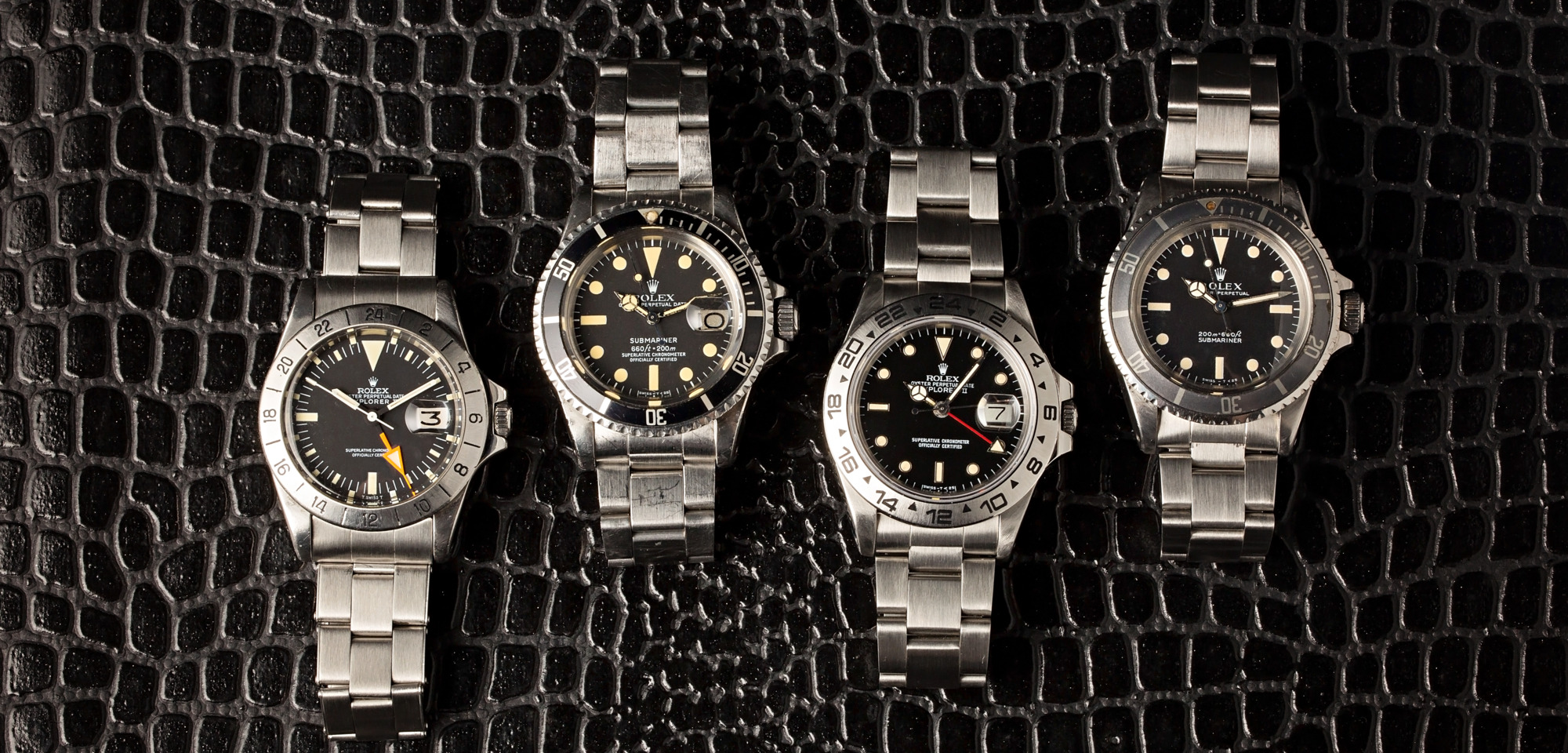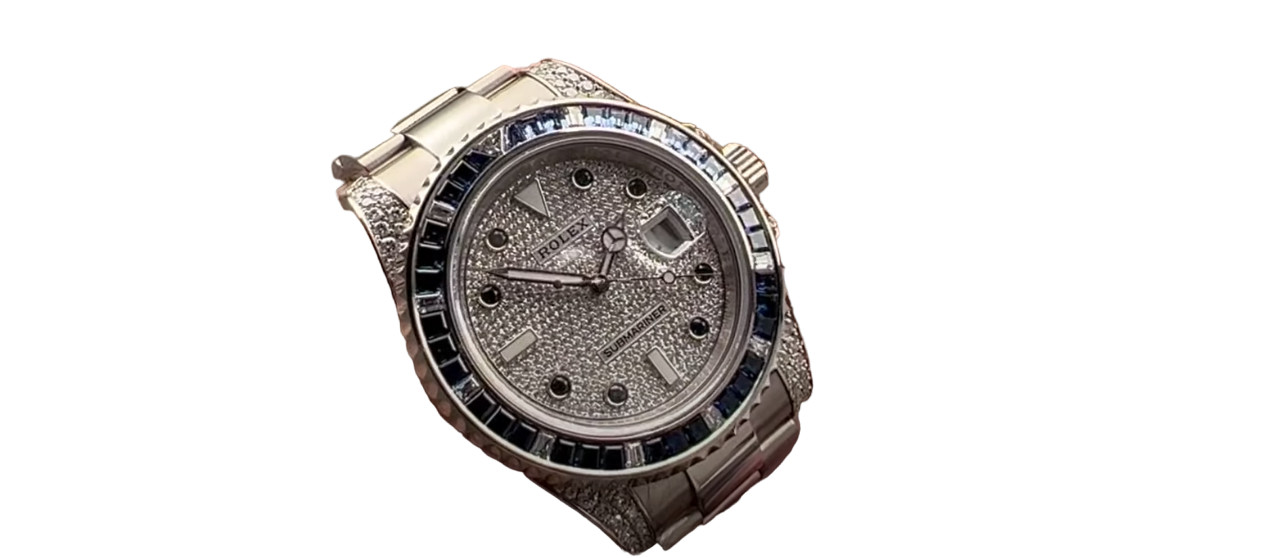When purchasing a vintage Rolex watch, it’s extremely important to thoroughly assess the condition of its various components, as the slightest flaws, blemishes, or minor signs of damage can all have an impact on its resale value. Certain components such as the dial, hands, and bezel play a significant role in determining the value of a timepiece, and in the vast majority of instances, the overall condition of these components is directly correlated to the value of the watch itself. Generally speaking, the closer these key components are to being in mint condition, the more desirable the watch will be to collectors, and this ultimately results in a higher price on the open market. However, when it comes to vintage Rolex watches, there will always be exceptions to the rules, and not all imperfections and defects are necessarily considered undesirable.
While most cosmetic imperfections are viewed as demerits and simply detract from a watch’s resale value, some can actually be seen as positive features by today’s collectors and can significantly increase the prices of the watches that feature them. A big part of the reason why these specific imperfections are regarded as desirable is because they are all naturally occurring – either due to limitations of the materials themselves or from minor mistakes in Rolex’s near-perfect production process. Additionally, Rolex will often correct its previous mistakes during routine repairs and service, and any components with imperfections or blemishes will often get replaced, making surviving examples increasingly less common each year. Therefore, without further ado, let’s take a closer look at some of the desirable imperfections that can be found on vintage Rolex watches.
Tropical Dials
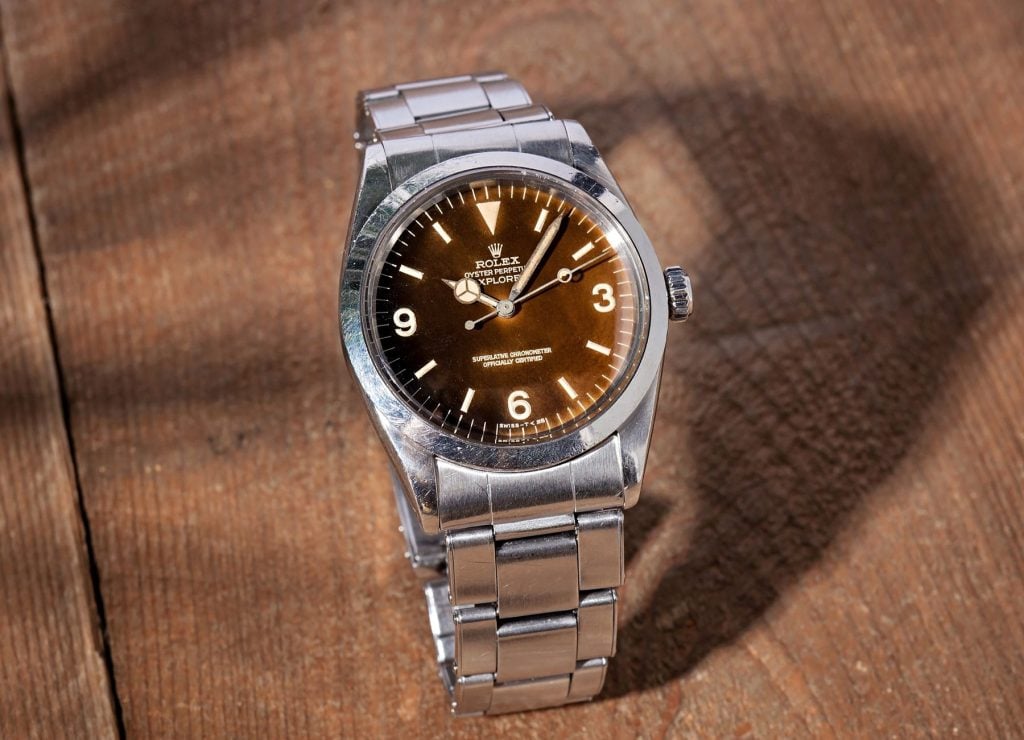
Probably the single most famous example of desirable imperfections are the “tropical dials” that can be found on certain older Rolex models. One of the many joys of collecting vintage Rolex is knowing that no two watches can ever be truly identical, simply due to the unique aging process that is determined by how each one is worn over the years. Most frequently referred to as “tropical” or “color change” dials, these unique Rolex dials have slowly changed colors over the years due to minor imperfections in their surface finish reacting to prolonged sunlight exposure and other environmental factors such as heat and mild humidity. The most famous examples are the tropical dials that transform from black to brown, although the phenomenon is not limited to just black dials, and sometimes the results yielded by other color changes are arguably far more exciting.
Bright blue dials like those fitted to older two-tone and solid gold Rolex Submariner watches can transform into colors that range from turquoise to royal purple. Meanwhile, white dials can become a rich cream color, while silver dials can take on shades that range from pink to brown. Among the more interesting examples of this phenomenon are the “Patrizzi” dials fitted to Rolex Daytona 16520 watches, which are characterized by the contrasting rings on their sub-dials that have changed color over the years from silver to a unique shade of brown. This particular style of color change Rolex dial is named after Osvaldo Patrizzi, an Italian collector and auctioneer who first discovered these unusual Zenith Daytona dials while assembling the catalog for a sale back in 2005. It’s important to note that while the color changing process itself is naturally occurring, not all dials will change color since the process is partially determined by environmental factors. Even two examples of the same watch that were produced during the same exact year can age very differently after multiple decades, and it is for this exact reason why they are so desirable among today’s collectors.
Ghost Bezels
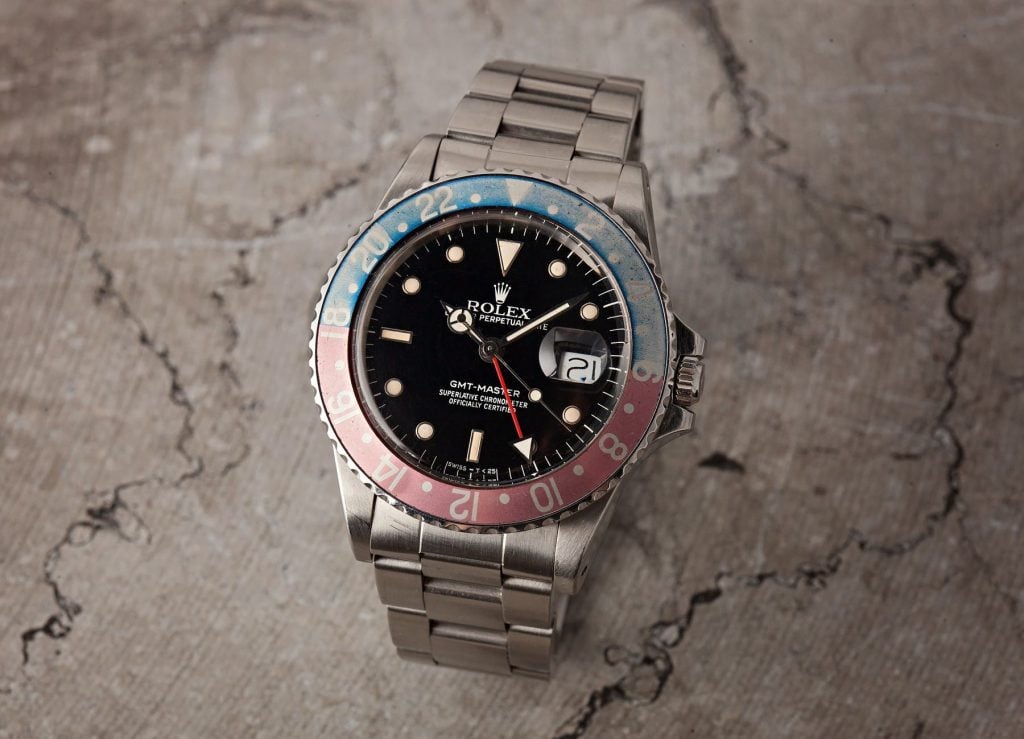
Ghost bezels are another type of desirable vintage Rolex imperfection characterized by color changes that slowly take place over the course of many years. With that in mind, unlike tropical dials, which are located on the inside of their respective watches and change color despite being protected by their crystals, ghost bezels are external components and sit fully exposed to the elements. Prior to introducing its own proprietary ceramic material known as Cerachrom, Rolex previously made its bezel inserts out of anodized aluminum, which would have the tendency to lose its color over the years. The anodizing process creates a colored layer on the surface of the aluminum insert, and this layer can wear away and fade with prolonged exposure to sunlight and saltwater, along with simply rubbing against your fingers and clothes during my regular wear and use. Over time, the colors get increasingly washed out and faint, which ultimately leads to their “ghost bezel” nickname.
Since aluminum bezel inserts frequently scratch and fade, they are commonly replaced during routine service, and vintage collectors now value ghost bezels because a lot of watches have had their original faded inserts replaced over the years. Additionally, the ghost bezels that are valued the most are generally those that show significant signs of fading without having any significant marks and scratches in their finish. As you might imagine, when a watch receives enough wear to the point that its bezel fades, it is also highly likely that it has picked up a few scratches during that time. Although ghost bezels can be rather common when it comes to vintage Rolex sports watches, the ones in true collector-worthy condition are legitimately rare, and they are often accompanied by a significant price premium on the open market.
Spider Dials
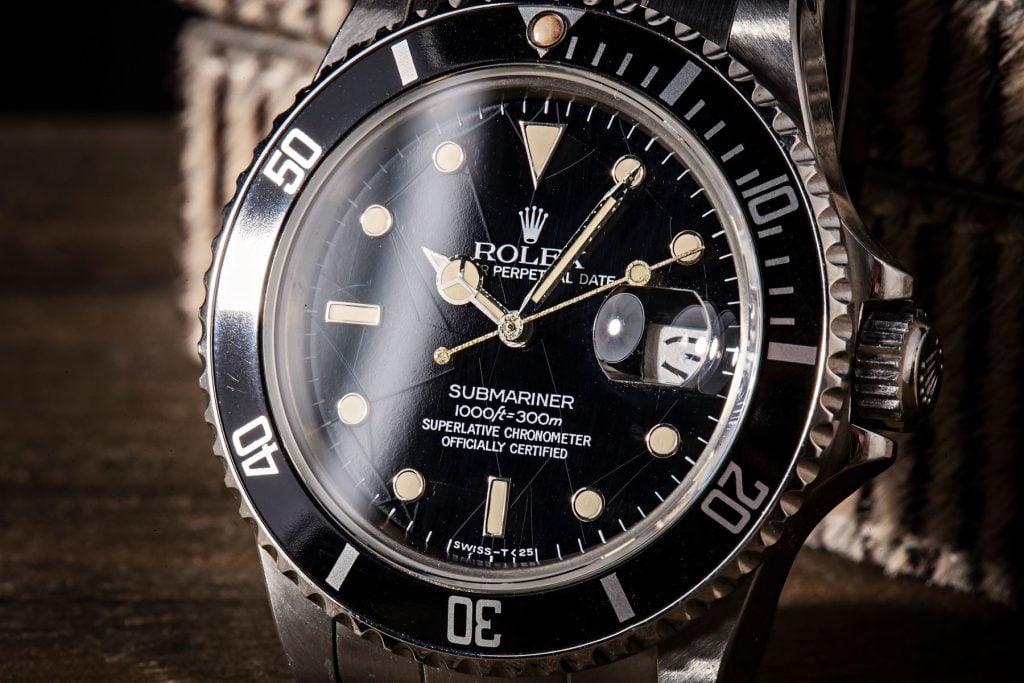
Rolex went through a transitional period during the mid to late 1980s, during which the brand rolled out a number of key updates that were intended to provide its timepieces with superior performance and a more luxurious overall feel. It was during this era that Rolex doubled down on refining its movement designs, and it was also during these same years that sapphire crystals replaced their older acrylic counterparts throughout much of the brand’s lineup. One such update that occurred to many of Rolex’s sports models during this time was the switch from matte dials to gloss dials with applied white gold hour markers. This style of dial offers a noticeably more elevated appearance, and it would go on to set the standard for future Rolex sports watches, with similar versions still used by the brand today. With that in mind, Rolex’s first attempt at creating these new glossy dials was not entirely perfect. The very earliest examples had a slight issue with the lacquer used to create their surfaces, which ultimately resulted in the variation known as “spider dials” by today’s collectors.
Over time, some examples began to develop faint cracks in their gloss black finish, which is a phenomenon commonly referred to as crazing within the collecting community. The faint cracks are only present on the black background layer of the dials, meaning that the white text printed on top remains entirely undisturbed. The small cracks can often only be seen when viewing the watch at an angle in bright light, and their appearance is slightly reminiscent of a spider’s web (hence the “spider dial” nickname). The price premiums attached to Rolex spider dials aren’t nearly as high as those that accompany tropical dials, and sometimes you can find a watch with a spider dial for roughly the same price as one that lacks this unique feature. While some collectors view spider dials as simply being damaged, others appreciate them for their unusual aesthetic and the important role that they occupy within the brand’s history.
Tritium Patina
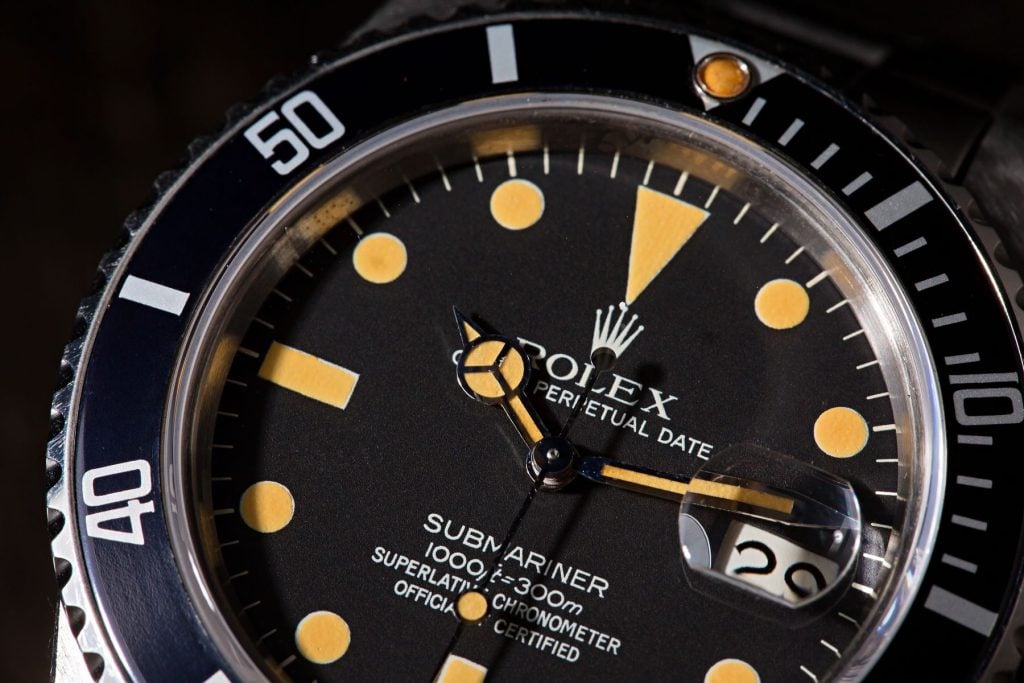
Prior to switching to photo-reactive luminescent materials, Rolex finished its dials and hands with radioactive compounds to make them glow in the dark. After radium was deemed too dangerous in the early 1960, Rolex switched to a less radioactive material known as tritium, which would remain in use all the way up until the late 1990s. Consequently, the vast majority of vintage Rolex watches all feature tritium lume on their dials and hands, and just like radium, tritium-based luminescent material has the tendency to develop a patina over the years. While ghost bezels fade due to prolonged exposure to their environments, tritium will develop a patina even if the watch remains entirely unworn and never sees the light of day. Additionally, tritium has a half life of approximately 12.3 years, meaning that after a little over two decades, a watch with tritium lume won’t glow at all. Consequently, just like other vintage components with desirable imperfections, many original tritium dials have been replaced throughout the years, and surviving examples are now worth a premium to today’s collectors.
The colors of tritium patina can range from light cream to burnt pumpkin, and no two examples will be exactly alike. While Rolex’s modern photo-reactive luminescent materials all appear white in the daylight, the patina offered by tritium can add a splash of warmth to a watch, which instantly gives it a vintage overall appearance and immediately separates it from the modern references that Rolex produces today. A perfectly symmetrical patina with a rich and even color across the entirety of the hands and hour markers is a highly desirable trait among vintage collectors. Not only is it often a good indicator that the dial and hands are both original to the watch, but the unique aesthetic that it offers perfectly compliments the overall appearance of older timepieces and it serves as one of the hallmark traits of a vintage Rolex watch.




